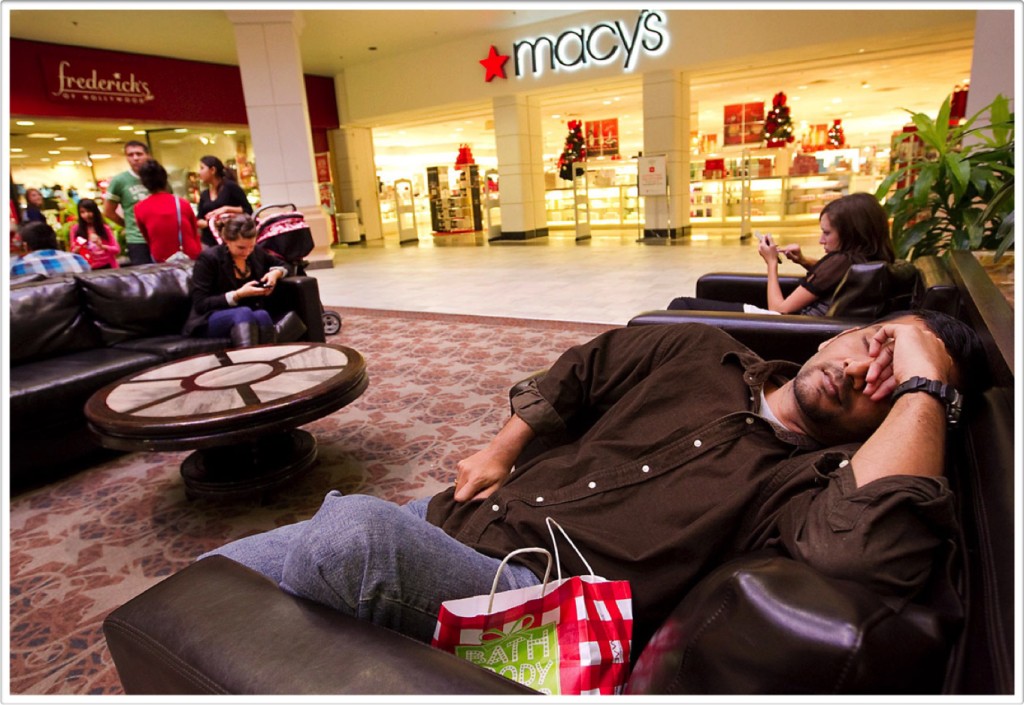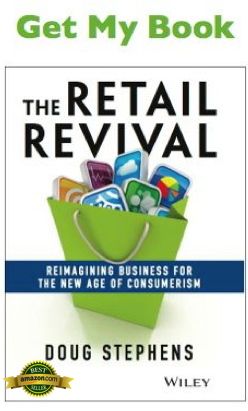
By Doug Stephens
Today’s retailers face a tsunami of problems but none, in my opinion, is more deadly than the pandemic of sheer consumer boredom that shoppers are being subjected to. Most retail is just painfully boring. In fact, the majority of store chains, malls and shopping centers have become beacons of boredom, monuments to mediocrity and havens of ho hum.
There are a couple of reasons for this.
To understand why this is happening, you only have to put yourself in the shoes of a category buyer for Macy’s. What is the number one criteria that you, as a buyer, would place above all else when considering which products to bring into your stores? Sales of course. Because unless a product will sell in significant volume, it won’t justify the square footage it occupies. And it is for that one single reason – anticipated square foot sales volume – that a plethora of unique, fun, fashionable and fascinating products will likely never see the light of day on the sales floor.
Now, repeat the Macy’s buyer mandate across the thousands and thousands of retail buyers out there, many of whom pursue the same, myopic dollars-per-square- foot rule and soon every store in the mall begins to look the same. Every mall looks vaguely like the next. And voila…mass boredom!
Exacerbating this phenomenon is the fact that our expectations of variety, selection and discovery are being pervasively shaped by the endless sea of products available online. Online marketplaces like Amazon, Alibaba, Etsy and throngs of pure-play specialty merchants provide shoppers with the ability to search, discover and learn about an abundance of new and interesting products. Online sellers can do this, of course, because they don’t have to stock a thousand of something if they only sell ten of them per year. They can still carry the item, without tying up massive amounts of capital and floor space. Consequently, online is where you’re likely to spot the next cool, new product. Not in a store.
The Economics of Retail Are Broken
At the heart of all this brick and mortar boredom, lies an outmoded model for how retailers make money. The wholesale to retail model by definition discourages risk. The commitment to per-square-foot volume of sales as a primary metric of success becomes a straightjacket that impedes any creativity or adventure on the part of a buyer.
The Store As Media
To escape this moribund state, retailers will have little choice but to move to a new economic model. One that depends less on volume sales and more on the volume of positive shopping experiences. As I’ve written in the past, this new model will, as I envision it, be far more like a media revenue model than a typical wholesale to retail buying agreement. In essence, the store itself ceases to operate solely as a distribution vehicle for product but also, and perhaps more importantly becomes a media channel for consumer experiences. Physical stores become interactive media environments where brands can communicate their unique stories, consumers can have immersive interactions with products and all this activity is measured and quantified in real time.
A prime example of this is the Palo Alto based B8ta, a new internet of things store and brainchild of four ex-Nest employees. B8ta defies conventional retail paradigms by purely stocking those products its owners find compelling or intriguing. In addition, B8ta charges brands – established brands and startups alike – rent, if you will, for the space their product occupies, in addition to access to immediate feedback on both sales and customer interactions with their products, which is gathered by systems that measure consumer traffic and interactions with individual products.
Unlike Best Buy, a retailer that sets out to first sell things and then attempts (often in vain) to be interesting while they do it, B8ta works to be interesting first, and uses that intrinsic value to drive consumer interest and feed their revenue model. 
As I see it, unless retail solves its boredom problem nothing else matters – mobile, omni-channel, beacons – none of it will make any difference whatsoever. Unless retailers can extricate themselves from the tyranny of dollars-per-square-foot decision making, and build stores that customers love visiting, all other efforts, initiatives and investments will be in vain.
The bottom line is that in a world where three taps on a piece of glass gets me anything I want, there’s simply no more room for boring stores.

